''Iranian politicians consider the turmoil as part of the hybrid war of the USA against the country''
Why the power of guards wasn’t needed to suppress the protest in Iran, what American analysts admitted and who is in the Persian protest
The popular unrest in Iran that started late in 2017 was the most unexpected thing for both experts and probably very residents of this country. Realnoe Vremya turned to Ismagil Gibadullin, expert in Near East, and asked him to give his evaluation of the events. Here is the interview with him.
What caused the unrest in Iran? What a scale does it have?
First of all, it should be noted this unrest or, more precisely, incidents they grew into, became a total surprise not only for foreign reviewers but also the very Iranians. The country hasn't seen such big protests since 2009. In addition, they are a bit different from the last protest wave in terms of their participants and slogans. However, their scale has been seriously increased due to a wide coverage in the western media.
Protests took place in tens of cities of Iran, mainly in small provincial cities, including in the suburbs of the country. It seemed to me the tension of these protests caused some misunderstanding among the Tehranis and citizens of other big cities.
The social base and conditions for similar protests in Iran, undoubtedly, had been maturing for a long time. Data of surveys speaks about some disappointment of Rouhani's electorate due to insufficiently rapid changes in the economy after partially lifted sanctions. Initially, middle-aged people, workers of small and medium-sized enterprises who suffered from delayed salary payments participated in the protests. However, representatives of the generation of the 90s, young university graduates who suffer from unemployment the most are actively taking part in the turmoil. They all went on crowded demonstrations on the first days. Their positions on life and outlooks are very shaky, they are influenced by social networks more than others with all ensuing consequences – pixelated thinking, often inability to soundly analyse a situation. They are disappointed by all political forces of Iran in a similar way and can become a fertile ground for radical ideas and urges.
How often do such campaigns take place? In general, Iranian protests have a cyclical pattern. Mass performances take place in Iran with a period of 8-10 years. The latest big protests were in 2009, while the university turmoil in 1999 had been the biggest protest before. Such protests always lead to acts of violation and result in forced suppression from the power, like it often happens to any youth protests in all countries of the world.
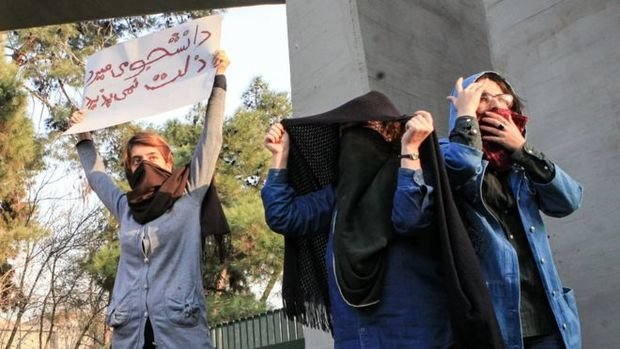
''Representatives of the generation of the 90s, young university graduates who suffer from unemployment the most are actively taking part in the turmoil.'' Photo: news.tj
''Protests could have been staged by opponents of reformist government's policy among conservatives''
What slogans do they have? What became a trigger? Many speak about the Kurdish factor.
These protests are very strange, they have neither clear centres, nor leaders, nor general organisation. It's difficult to find out who invents such slogans. Firstly, the protest was against growing prices and the government's economic policy. A sudden rise in prices for chicken eggs was the cause. However, the western media hastily distribute information that slogans against the war in Syria and support of groups of Lebanon and Palestine, against the Islamic Republic as it is, the principle of religious power — Wilayat al-Faqih and personally the rahbar – joined them. According to information of the first Iranian journalist investigations, organised and prepared groups of provocateurs who join rioters who shout such slogans out and incite to violation work on the spot. However, the majority of the rioters agrees with neither these slogans nor aggressive and illegal acts they come from.
We need to understand the specifics of the Iranians and their behaviour in mass events. The Iranians, in general, like to participate in mass events, especially in the evening, which puts a festive touch. It's often for them a kind of way of evening leisure time, which is especially noticeable during hot election campaigns. And today many Iranians are going outside just out of curiosity and simply observe what's happening, make a crowd, what the provocateurs skilfully use.
As for the Kurdish factor, indeed, the protests covered different regions of the country, including Sanandaj – the centre of Kurdistan Province with mainly a Sunni population. But ethnic and religious factors don't play a major role there, though old problems with Kurdish separatism made themselves known this time as well.
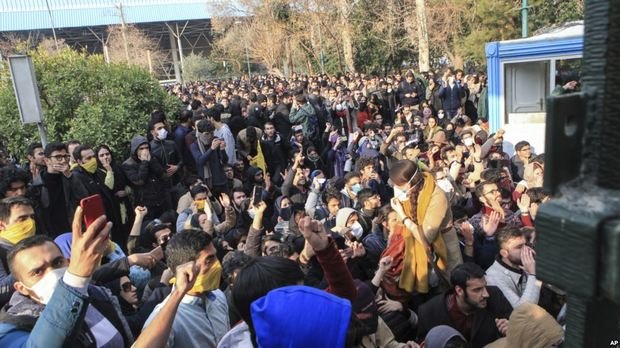
''These protests are very strange, they have neither clear centres, nor leaders, nor general organisation. It's difficult to find out who invents such slogans.'' Photo: news.tj
Who can really be behind the campaigns? Is it true that these campaigns are signs of the regime's fall and requirements of democratic changes?
First of all, we need to separate peaceful protests from incidents coming from groups of provocateurs who are inserted into demonstrators who are linked with extremist groups. According to some information, protests could have been staged by opponents of the reformist government's policy among conservatives or, like they are called in very Iran, principlists – Osulgerayan – as well as supporters of disgraced Mahmoud Ahmadinejad. However, as I already said, the provocateurs joined the process very quickly, Persian-speaking communities created outside Iran and promoted in Telegram helped to coordinate their actions. Pro-government demonstrations in more than 1,200 settlements of the country on 30 December that were dedicated to the 8 th anniversary of the all-Iranian protest in 2009 as support of the power, which gathered over one million people in answer to the campaign of the Oppositionist 'green movement' added some confusion. Scenes of these demonstrations with people with Shia mourning symbols, photos of Khomeini and Khamenei were distributed in the West together with scenes of Oppositionist protests.
I'd like to separately say that the western media make an extremely exaggerated and distorted media coverage of Iranian protests. It's obvious that acting by political order, they try to unite all protests, acts of provocateurs and even pro-government demonstrations into one single picture, making the audience to think about the inevitability of the fall of the Iranian regime.
I was also personally surprised at the activity of some Russian commentators like Nadezhda Kevorkova or blogger El Murid, not to mention representatives of liberal Opposition who showed surprising immaturity, immediately started to draw stupid parallels of Iranian events with the Russian reality, to jeer, gloat and speak ironically about 'spiritual clips', etc. Exalted reasoning that 'there is no government in the country', about the real victory of some spectacular protest of the masses like a done deal, discussions about the transition of the army and other security agencies to the rebels' side especially surprised. All this mess is far from reality but very quickly spreads in Russian social networks, supported by other bloggers and news portals. An unnatural union of the liberal Opposition and Russian-speaking Salafis on the grounds of common dislike for the Kremlin and its position on Syria.
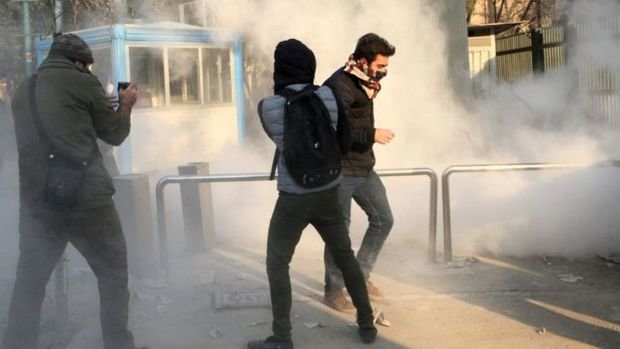
''The country hasn't seen such big protests since 2009.'' Photo: AFP (news.tj)
''Iranian politicians consider what happened as part of the hybrid or proxy war''
Do you believe in foreign meddling in this turmoil?
Foreign meddling is seen quite clearly. Very Iranian politicians consider what happened as part of the hybrid or proxy war of the USA against Iran. Many factors including Trump and the most odious Republican politicians like John McCain and Rex Tillerson's statements about the support of the rioters illustrate it. They all tell 'it's time for changes in Iran'. Trump's administration prepared a doctrine to hold Iran a long time ago, in general. These days the Iranian media published material of the report of American expert Scott Modell 'Iran on Notice' that was prepared as early as February last year. The author of the report is an American national security expert who analyses conditions of the 'Persian Spring' by comparing the current situation with 2009 when it was possible to seriously destabilise the situation in the country. The report's conclusions are not very comforting for the Americans. There aren't charismatic leaders, there's no organised opposition, the people don't have a desire to protest, neither the elite had support. The 'presence of effective communication means', that's to say, famous Telegram and other social networks is the only thing that distinguishes the current situation from 2009.
Allies of the Americans actually actively help in the Arabian Peninsula, first of all, Saudi Arabia – Iran's lasting enemy and rival. About a third of millions of twits with Oppositionist hashtags came from Saudi Arabia and the UAE, about another 20% – from European counties and only 26% from Iran itself.
Amad News is one of the main resources of the rioters that was banned in Telegram for urging to create Molotov Cocktails. This resource was created about a year ago and managed to increase its audience to 2 million people by the end of the year. It's registered by a Saudi citizen and uses the hosting service of a Saudi company.
The 'kompot' consisting of initiators of the protests whose 'ingredients' couldn't agree on their own and agree performances with each other can also indicate the decisive role of the external factor. Kurdish separatists, Arab nationalists of Khuzestan Province, Islamic Marxists from the People's Mujahedin Organization of Iran, monarchists, Sunni extremists, including ISIS supporters (banned on the territory of Russia), secularists, a number of radical Shia groups who are against the principle of Wilayat al-Faqih that Islamic structure of Iran is based on. All these powers, which are absolutely different in terms of their values and even inimical to each other, are united only by one thing – their contacts with the State Department and American special services that have frequented in recent months.
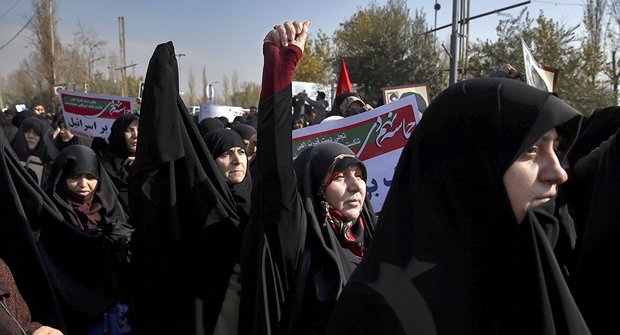
''Iranian women participated in all protest waves on a par with men in the last two decades.'' Photo: AP Photo/ Ebrahim Noroozi (ru.armeniasputnik.am)
The factor of women (active participation, refusal of wearing hijab) is especially discussed.
Indeed, a photo of a girl who raised her white headscarf above her head that turned into a meme on the Internet became one of the visual symbols of these protests. However, I wouldn't say it became topical right during the recent events. Iranian women participated in all protest waves on a par with men in the last two decades. The topic of compulsory hijab also unchangeably appears in the rhetoric of Oppositionist movements. But the cancellation of this rule or introduction of considerable concessions if it's followed is already openly discussed in the Iranian media in recent years.
This is why I would like to especially note not the factor of women but the role of new means of mind control, more expanding abilities of social networks and messengers that have been raising concern in Iran for a long time. Not officially recognised political groups and alliances linked with reformists or Conservatives but network movements on the Internet have possessed moods of a big mass of people for the first time, even if for a while.
Many experts speak about the special role of Restart – a kind of hybrid of Lifespring American brainwashing factory and Ukrainian Right Sector. Former presenter of a programme on Iranian TV Mohammad Hosseini who emigrated to the USA in 2005 created the movements. In America, he created a new doctrine of personal growth and self-improvement based on eclectic fragments of Persian poetry and new-age studies that a radical, nationalist and atheistic ideology is hidden behind it. Right this person urged its followers to set fire to state establishments, mosques, Shia holy places, attack the police. As strange as it might sound, there were enough thugs who rushed to carry out it in practice. It's difficult to control such network movements that use sophisticated means of control.
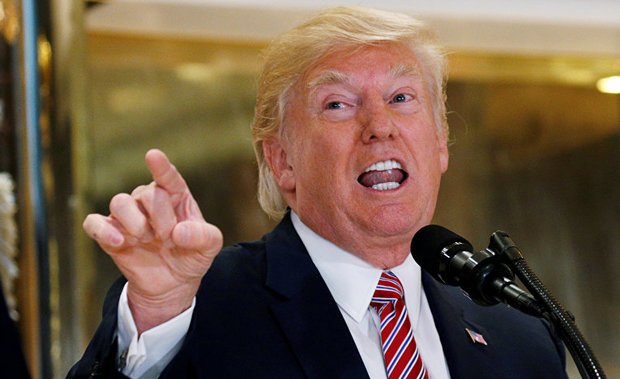
''Foreign meddling is seen quite clearly. Very Iranian politicians consider what happened as part of the hybrid or proxy war of the USA against Iran.'' Photo: Reuters, Kevin Lamarque (inosmi.ru)
Role of financial pyramids
It is surprising that everything exploded in Shia centres – Mashhad, etc. Why did it burst there?
Mashhad is the second religious centre of Iran together with Qom where leading Shia educational establishments are located. It shouldn't be forgotten it is a city where power, in fact, belongs not to the municipal administration but the biggest waqf in the country — Āstān-e Qods-e Razavi that obeys Rouhani's major rival in the last presidential elections Ebrahim Raisi. As I already said, the Conservatives' camp initially was interested in putting pressure on the government by organising people's protests. Small provincial cities where the level of believers and support of the regime among the youth is traditionally higher became other protest centres. This is the difference of the 2017-2018 protests from the 'green movement' that affected, first of all, the middle class and students of big cities.
Do people support? What's the reaction of Iranian elites?
The majority of people are careful about protests. Their attitude was mainly influenced by facts of being implicated in protests of Americans and Saudis that became public in the state mass media. It's important that leaders of Sunnis and ethnic minorities of the country, including the Kurds that people talked about as one of the major forces of the protest, criticised the protests. The youth are a bit discouraged. The liberal community of Tehran, as usual, is concerned about the suppression of peaceful protests but isn't going to consolidate with radicals.
Authorities of the country are quite optimistic, though careful. These days leader of the country Ayatollah Khamenei made an encouraging statement urging to be firm and united. Other official persons of the country, Rouhani and even his rival Raisi supported the legal right of the people to demonstrations and a decent level of life. Rouhani's speech that was delivered by him on 1 January at an emergency meeting of the Supreme National Security Council also sounded confident, he enumerated merits and achievements of his government, the increased international prestige of the country.
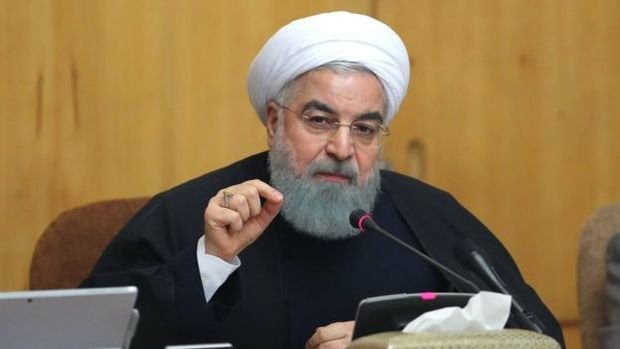
''Rouhani tried to point out three main reasons for the sudden explosion of dissatisfaction that became so-called 'black swans' for his government.'' Photo: news.tj
Economic growth totalled 6% during the year, while an average growth around the world is 2-3%. 700,000 working places were created, social benefits were raised three times at once during the year, gas and oil production volumes, production of several other important components of Iranian export suddenly grew. It's difficult to call this policy a failure. However, these measures don't improve the level of life of the bulk of the population fast, as it was expected, though they lead to the fast enrichment of many businessmen linked with the government.
Rouhani tried to point out three main reasons for the sudden explosion of dissatisfaction that became so-called 'black swans' for his government, as Nassim Taleb would say. He stressed that there were created many fraudulent joint-stock companies that didn't have a licence or used expired licences, financial pyramids, in fact, which caused tens of thousands of hoodwinked investors, and they were who went out to protest on the first days. According to Rouhani, the country had to spend billions to liquidate the damages of these pyramids. The president admitted the delays in salary payment to workers of some enterprises that could not sell their products on the market. Rouhani also stated the government didn't have a more serious problem than unemployment and all efforts should be put to fight against it.